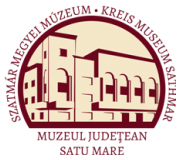Kinces, Diana: Micula. Chid Cultural. Istoric (Satu Mare, 2015)
Micula. Cultural - historical guide - The history of the village
The word Micula was very little modified or adapted over time, such as the area appears under the name Nichola (1216), Micula (1303), Mikola (1327), possessio Mykola (1329), possessio Mycula (1348), Mikola (1828, 1851). The area was first documented in 1216, in a letter of donation of King Andrew II who donated the land that today is called Micula, to the Count Merc for outstanding achviements. His descendants, Mikolay family, will remain the most important owners until the mid-nineteenth century. The emblem of the village was designed since 1456 during the reign of Ladislaus V. In 1657 Mikolay András cast a bell for the Reformed Church, with his family emblem. The town suffered very much because of the Tatar army battles. So in 1717, thousands of Tatars, killed children, parents, grandparents, robbing and ravaging everything they could find in the way. The place where the massacre occurred it is called today “Tatars mound.” In the early nineteenth century the village was documented as a Hungarian village, with the majority of population belonging to the Reformed Church, with an old stone church, priest and teacher. The names of those who restored the
